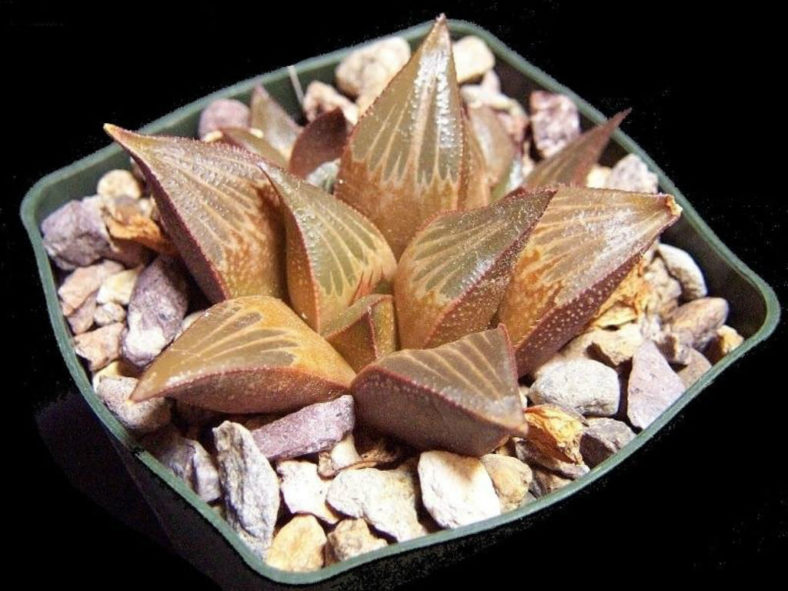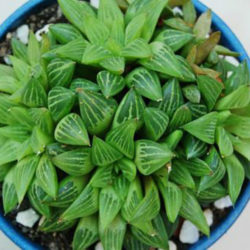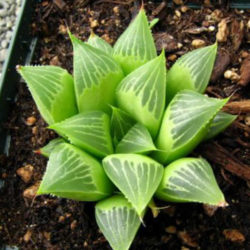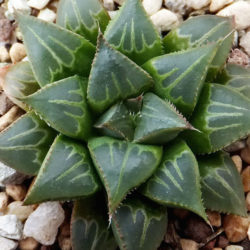Scientific Name
Haworthia mirabilis (Haw.) Haw.
Synonym(s)
Aloe mirabilis, Apicra mirabilis, Catevala mirabilis, Haworthia mirabilis var. mirabilis, Haworthia retusa var. mirabilis
Scientific Classification
Family: Asphodelaceae
Subfamily: Asphodeloideae
Tribe: Aloeae
Genus: Haworthia
Description
Haworthia mirabilias is a slow-growing succulent that forms a stemless, slowly proliferous rosette of green to yellow-green, retused leaves with a lined, translucent face and small marginal teeth. The rosette slowly grows to 7 inches (2.8 cm) in diameter. The leaves turn reddish or brownish in the sun. They are up to 1.4 inches (3.5 cm) long and up to 0.5 inches (1.3 cm) wide, erect when young erect, becoming ascending with age.
The flowers are narrow, white with greenish-brown keels, and appear on slender, up to 18 inches (45 cm) long stalks mainly from spring to early summer.
Origin
Haworthia mirabilis is native to South Africa. It grows on rocky foothills of the mountain ranges from Caledon to Bredasdorp in the Western Cape province.

Hardiness
USDA hardiness zone 10a to 11b: from 30 °F (−1.1 °C) to 50 °F (+10 °C).
How to Grow and Care
These succulents are not considered difficult houseplants to grow. If you can keep a pot of Aloe alive on a windowsill, chances are you can do the same with a dish of Haworthia. As with all succulents, the most dangerous situation is too much water. They should never be allowed to sit in water under any circumstances. At the same time, these little decorative plants can be grown in interesting containers such as teacups and even miniature baby shoes. If you're given a Haworthia in such a container, make sure the container had adequate drainage.
Haworthias are small, usually between 3 and 5 inches (7.5 cm and 12.5 cm) in height, and relatively slow-growing. They are often grown in small clusters in wide, shallow dishes. Over time, clusters will naturally enlarge as the mother plant sends off small plantlets. When the cluster has outgrown its dish, repot in the spring or early summer into a new wide and shallow dish with fresh potting soil. This is also the time to take offsets for propagation.
See more at How to Grow and Care for Haworthia.
Varieties
Links
- Back to genus Haworthia
- Succupedia: Browse succulents by Scientific Name, Common Name, Genus, Family, USDA Hardiness Zone, Origin, or cacti by Genus
Photo Gallery
Click on a photo to see a larger version.



